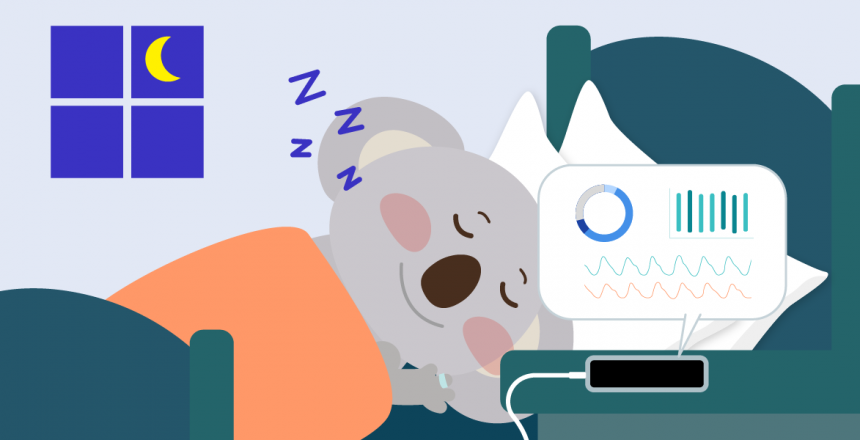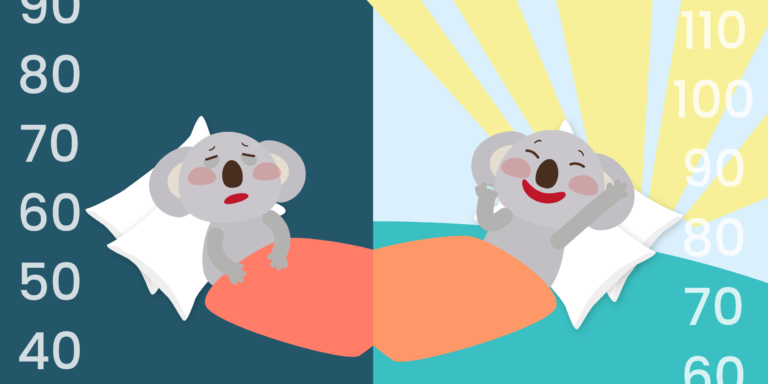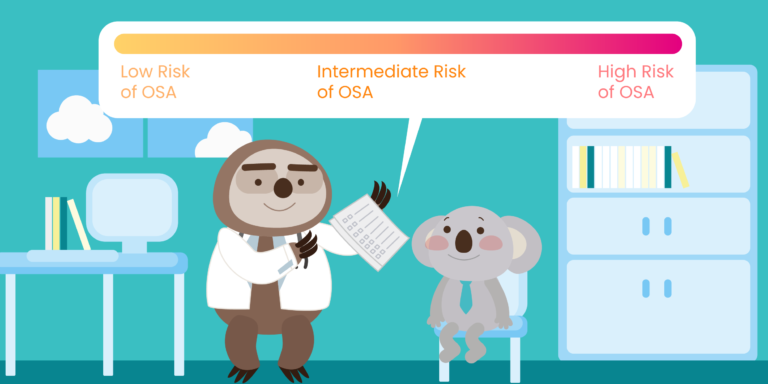Sleep apnea tests at home
What is a sleep test at home?
A home sleep test, also known as a home sleep study, is used to diagnose a range of sleep disorders, including obstructive sleep apnea (OSA). If you suspect being at risk for the condition, it’s important to know about different ways to get an official diagnosis. Home sleep apnea tests can detect not only the presence of obstructive sleep apnea, but also the severity of your symptoms. It’s the first step in seeking treatment before severe health complications can develop.
The home sleep apnea test monitors your vitals while you’re sleeping. It is recommended to spend about eight hours in bed in order for the device to gather sufficient data for an accurate diagnosis. While you’re sleeping, it will record your breathing patterns and other physiological data like heart rate, blood oxygen levels, and eye movement patterns. The test results are then processed and analyzed by a sleep specialist. They will be able to determine whether or not you have sleep apnea based on the results.
In this article, we’ll outline an in-depth look at how the test works, what happens during a sleep study, and how it can help you receive the sleep apnea treatment you need depending on your condition.
What does a sleep study test at home measure?
An at-home sleep apnea test measures a number of indicators on whether someone is displaying sleep apnea symptoms. If you display such tell-tale symptoms, a few of the following metrics may seem familiar.
- Respiration: The number of breaths you take per minute is a key indicator of whether your breathing is being disrupted during sleep. If your breathing has become more irregular, it may be time to get tested for sleep apnea.
- Snoring/ Increased breathing effort: People with sleep apnea struggle to breathe while they sleep. If you feel like it’s costing you extra effort to get air into your body, this could be a sign that you’re suffering from this sleep disorder. Additionally, snoring is one of the most common symptoms of sleep apnea and can occur as a result of excess tissue in your throat or tonsils blocking the airway during sleep.
- Blood oxygen levels: One of the most important things your body needs to function properly is oxygen. When you’re sleeping, your body uses less oxygen than when you’re awake, so it’s normal to see some variation. However, for people suffering from sleep apnea, this drop is even more pronounced as breathing is disrupted, impeding the normal amount of air from flowing in and out of the lungs.
- Heart Rate: While you may not realize the strain this has on your body, your heart certainly does. If breathing is disrupted or interrupted during sleep, the body’s supply of oxygen is interrupted. Your heart will try frantically to keep pumping, but the stress of this situation will cause your heart rate to speed up.
What is the process of a sleep apnea study at home?
Home sleep apnea tests are used to diagnose sleep apnea and determine if you need further treatments. The process of using a home sleep apnea test is the same across multiple products. Here are the steps you can expect to follow:
- Step one: You may be asked to use the device consistently for a period of time. This amount of time can range from one to multiple nights, depending on your doctor’s recommendation.
- Step two: Once you’ve received the device, you will need to read through the instructions thoroughly. You should also make sure that you have all of the necessary parts of the sleep test before beginning your test. If the device is supposed to be paired with a smartphone app, be sure to check the connection before starting to record. Don’t forget to make sure the battery will last through the night!
- Step three: Once you have completed your test, you can send in your data to be analyzed. Alternatively, if you’re conducting the study on your own, you may be able to remotely be able to access your results on the manufacturer’s website or smartphone application.
Home sleep study equipment
Best at home sleep apnea test: PranaQ Sleep Apnea Test
Though a range of sleep apnea trackers are on the market, PranaQ’s home sleep apnea test, TipTraQ, offers some distinct advantages, including:
- Light & Comfortable: Our user-friendly design makes it easy to attach the device at the beginning of the test. The material is breathable and the device is so light, users will barely notice it after a few minutes. This is key for gaining accurate sleep insights because it’s important for the patient’s sleep to be as close to normal as possible.
- Rechargeable: The device is rechargeable, so there’s no need to worry about changing batteries or suddenly running out of power in the middle of the night.
- Device delivery: Everything about the process was made to be as convenient as possible for the patient. PranaQ will be responsible for the delivery of the device.
- Data upload: After waking up and finishing the recording session, the patient’s data will be uploaded automatically and can be analyzed quickly. The results will be ready quickly and patients can check them directly through the smartphone app.
PranaQ’s Sleep Apnea Test, TipTraQ, is a convenient and innovative solution for anyone who is considering an official diagnosis or is interested in monitoring their sleep apnea symptoms. Using the device is incredibly simple. The process is as follows:
- Pair the device to your smartphone app
- Attach the device to the tip of your finger and start recording
- Stop recording when you wake up and send off your data through the app
Since the device is paired to PranaQ’s own mobile app, all data is securely sent to the patient’s physician for review the following day, making it one of the fastest and best at-home sleep study tests on the market.
Benefits of home sleep study kits
There are several benefits to using a home sleep study kit, including:
- Affordability: Home sleep tests are generally much cheaper than in-lab tests, as they don’t require a visit to a hospital or sleep clinic.
- Convenience: Undergoing a sleep test at home rather than somewhere else for the night can ensure your sleep quality is normal and uninterrupted. The device will be delivered directly to your address for maximum convenience.
- Comfort: At-home sleep apnea devices are far more comfortable than tests conducted at a sleep clinic, which require patients to be hooked up to electrodes, wires, and heavy machinery during the session.
- Accessibility: Patients often have to wait months before conducting a sleep test in a sleep clinic. Depending on patients’ and sleep clinics availabilities, this long wait time can drastically push back the diagnosis and therefore any kind of treatment. However, conducting a home sleep apnea test can be done virtually any time, speeding up the whole process greatly.
Disadvantages of home test kits for sleep apnea
Similarly, there are some disadvantages to home testing, including
- Limited vitals overview: Most sleep apnea tests conducted at home are limited to monitoring oxygen and breathing levels, whereas an in-lab polysomnography (sleep study) can track limb movements, brain waves, sleep stages, and other vitals—which are necessary to diagnose rarer conditions like central sleep apnea. It’s important to remember that home sleep apnea tests are only suitable for diagnosing sleep apnea, whereas in-lab sleep studies can detect a wider range of sleep disorders.
- No on-site support: It may seem daunting and disconcerting to try to fall asleep in a clinic where technicians and other healthcare professionals are closely monitoring your progress and carrying on other duties. However, it also means someone will notice if there is any sort of technical malfunction (ie. a device suddenly stops recording, a cable needs to be changed, etc). While conducting a home sleep test, you can rest assured your night will be as restful as always, but there is a small risk you will wake up to realize there was an unforeseen issue while you were sleeping. This means you may have to repeat the process the following night to gather more accurate data.

Things you need to know before using a sleep study machine at home
To get the most accurate results from your home sleep test device, you’ll want to prepare your space as much as possible. This way, it will be easier for you to fall asleep naturally and achieve accurate test results.
Complete these steps prior to your test:
- Make sure that your room is quiet and dark: The fewer distractions there are in the room, the faster you will fall asleep. If necessary, turn off any electronics (except your phone since you’ll need to keep it paired to the sleep test) before going to bed, so they don’t disturb you while sleeping.
- Follow your regular nighttime routine: The more you replicate your normal nightly routine before conducting the home sleep apnea test, the higher your chances of having a typical sleep cycle. If you always read a book before falling asleep, take a bath or shower before bed, then do so.
- Re-read the sleep apnea test instructions to ensure you’re using it correctly: This can help you feel more familiar and comfortable with the device once you lie down. Furthermore, it’ll reduce your chances of receiving a false test result and needing to do the test again.
How much does an at-home sleep study cost?
The cost for sleep apnea tests will vary depending on the company offering them and the type of test you choose. The most basic at-home sleep apnea tests can cost as little as a couple of hundred dollars, but more extensive testing may run up to $1,000 or more. Some insurance companies will also cover home sleep tests, though you may need a prescription.
If you’re interested in using an at-home sleep apnea tracker to monitor your own symptoms, please contact PranaQ.
Which works for me: take home sleep apnea test or a polysomnography test?
If you have access to a home sleep apnea test, it’s a good way to start assessing your sleep apnea risk level. It’s more affordable than a polysomnography test and can be done in the comfort of your home. If the results from an at-home sleep apnea test are inconclusive or show mild symptoms of sleep apnea, consider consulting with your physician about whether further tests are necessary.
Alternatively, polysomnography tests can monitor more vitals but require being hooked up to machines in a lab while you sleep. They also cost more money upfront than an at-home sleep apnea test and are not always necessary for all sleep disorders. In some cases, additional information can be useful for rarer conditions, but sleep apnea is usually easily diagnosable using a home sleep test.
Should I use an at-home sleep apnea test?
Now that you know the basics of what a home sleep apnea test involves, it’s time to decide whether or not you should get one to help you track your sleep. If you’re considering this option, don’t hesitate to contact us today! We will be happy to answer any question about taking an at-home sleep study.
Feel free to reach out to us via our social media platforms, including Instagram, Facebook, and LinkedIn, or subscribe to our newsletter now.
References:







